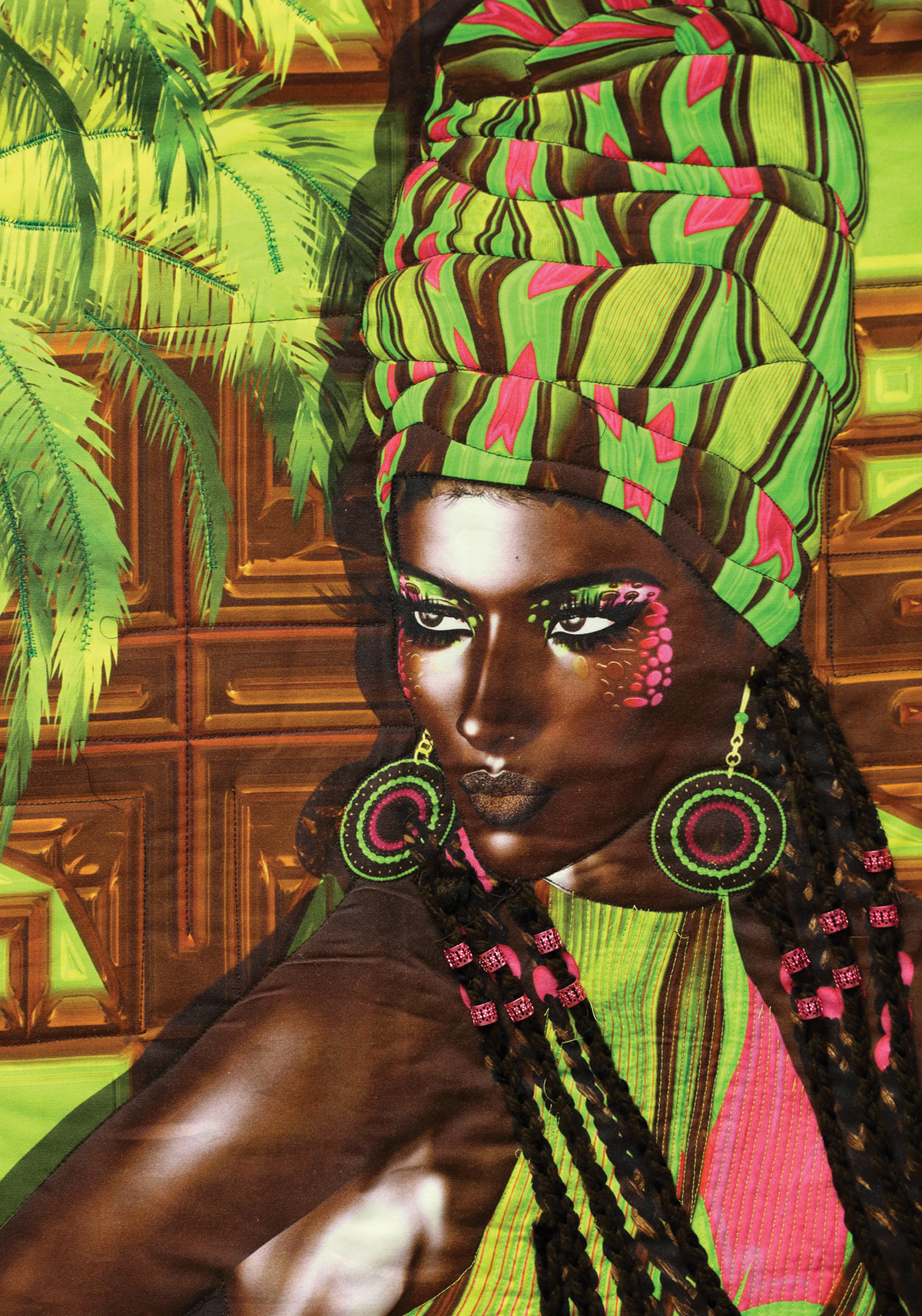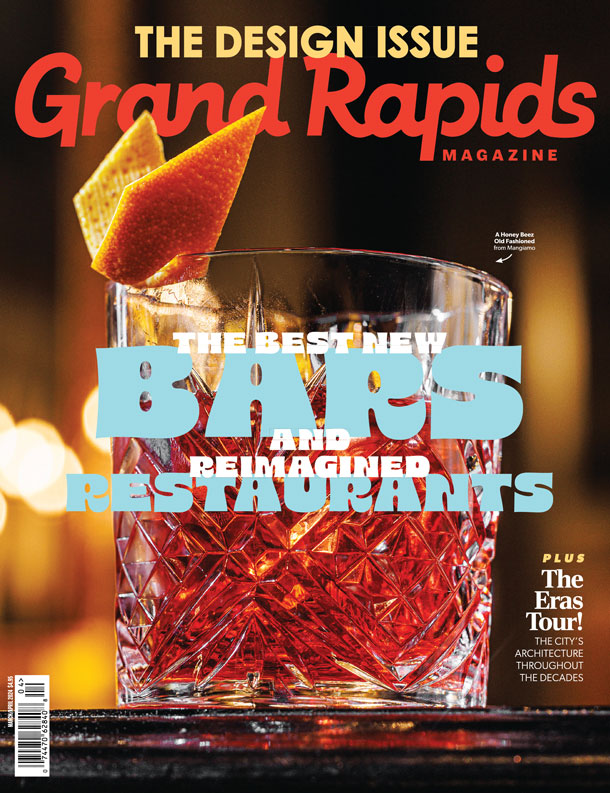This article is from the February 2019 Grand Rapids Magazine. Available on newsstands now or via subscription.
George Bayard III wants room to grow.
The Grand Rapids African American Museum and Archives is a blink-and-you’ll-miss-it storefront on Monroe Center stuffed with relics of black culture and black struggle — like buttons from Jesse Jackson’s 1988 bid for president, or a box of the old “Darkie” toothpaste brand, complete with a jarring caricature.
It’s practically hidden from passersby, squeezed between soaring condos and offices. But, according to Bayard, the museum founder, that’s not for long. He imagines aloud: a big, new museum with an auditorium and galleries of local and national black history. There could be other exhibits for black contributions to boxing, movies or entertainment.
“This building is great, and we know we’re going to be here at least another two years, but it’s just not large enough to do everything we want to do. It’s a building that — it’s just limited,” he said. “There’s nothing like having your own building.”
At that moment, it was easy to feel skeptical. The carpet looks worn, and the space itself is no bigger than a very modest storefront. Bayard said the new museum project will cost between $8 million and $10 million, which, in this space, seems like an impossibly heavy lift.
But, in early November, Bayard said about $4 million in “verbal” commitments had been pledged by private donors, foundations and businesses for a location just south of the downtown area (he declined to say whom).
And then, on Nov. 30, a breakthrough: Bayard said he could finally share publicly that there are “meaningful discussions” between museum officials and the Inner City Christian Federation for them to occupy part of a mixed-use building near Division Avenue and Wealthy Street. Bayard is hopeful the museum could have a new home in just a few years.
It’s big news because leaders and friends of GRAAMA say the museum is about more than a history lesson. Museum leaders describe emboldened racism in national politics, with one pointing specifically to displays in Charlottesville, Virginia, last year — where white nationalists marched openly and clashes left a young woman dead.
Michael Curtis, the president of GRAAMA’s board of directors, has watched those events unfold. The solution, he said, is dialogue — the kind the museum provides.

“As with most people, as we sit down and honestly talk about this, we have to … (have) an honest dialogue and approach it from each other’s perspective,” Curtis said. “(In) this country, unfortunately, this has been a long process.”
In Grand Rapids, it goes back more than a century. Todd Robinson, a professor of history at the University of Nevada – Las Vegas, tells the story compellingly in “City Within a City,” a detailed history of Grand Rapids’ equality struggle. The Ku Klux Klan marched through the streets in the 1920s; white business owners often charged black customers five times whites’ price for coffee. After World War II, the community was afflicted by the same racist housing issues that plagued cities around the nation, as Grand Rapids’ white suburbs grew wealthy and prosperous.
Racial divides perhaps peaked in the riot of 1967, with hundreds arrested across three days of strife, causing more than $3.7 million in damage in today’s currency.
Inequality persists today. In 2015, Forbes ranked Grand Rapids the second-worst metro area in the U.S. for black success, behind only Milwaukee. A 2016 measure of Kent County’s homelessness tracked almost exactly the same number of black and white people without their own roof — despite the county’s white population outnumbering the black community roughly 8 to 1, according to the next year’s census estimates.
And Grand Rapids still is grappling with how to move past four incidents in recent years where black youths age 14 and younger were handcuffed by police officers. Those incidents have drawn widespread attention — from the state ACLU to The New York Times.
“(The museum) brings everything full circle, to be honest,” said Chris Sain Jr., first vice president of the local NAACP chapter. “We have a lot of social justice issues at bay right now. We also are trying to improve police and community relations right now. (But) you do sense a little bit of (emboldened racism) when you’re out and about now, due to the political climate. And so, I think the museum is pivotal, and there couldn’t be a better time for it to be front and center in our community.”
GRAAMA already is winning accolades, snagging a nod at ArtPrize as an outstanding venue. Bayard said it’s part of a local resurgence in the black community, a kind of renaissance that extends from the museum to black-owned businesses like Forty Acres — a new soul food restaurant on Wealthy Street — a sense that good things are yet to come.
“I think there’s a new mindset with the African-Americans here that, in regards to entrepreneurship, there are now doors opening where they can step out and try something successful,” Curtis said, “and they’re not afraid to do that.”
Photos by Johnny Quirin: Top: Erica Millbrooks’ “American Beauty.” Middle: “Black Panther” comic book cover.








Facebook Comments